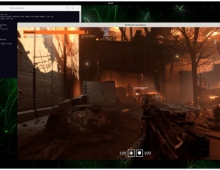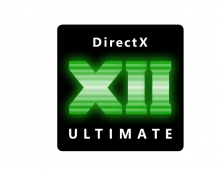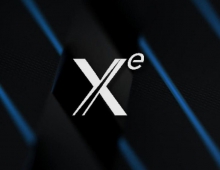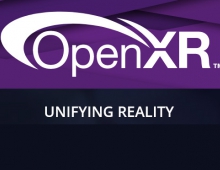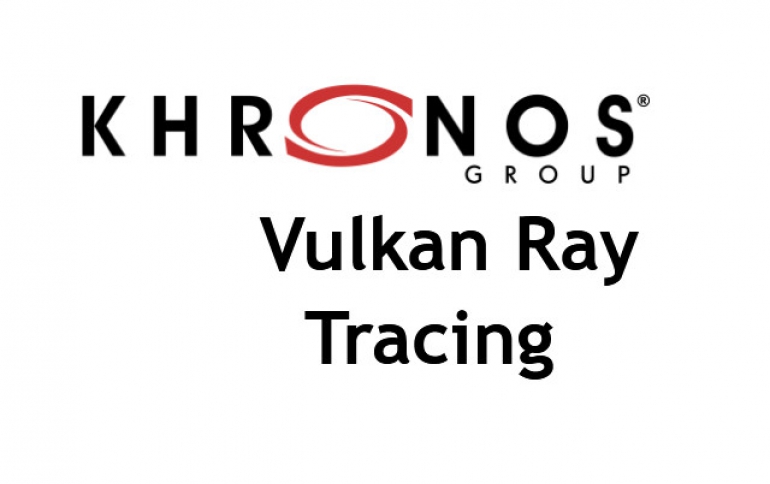
Khronos Group Releases Vulkan Ray Tracing
The Khronos Group announced the ratification and public release of the Vulkan Ray Tracing provisional extensions, creating the industry’s first open, cross-vendor, cross-platform standard for ray tracing acceleration.
Primarily focused on meeting desktop market demand for both real-time and offline rendering, the release of Vulkan Ray Tracing as provisional extensions enables the developer community to provide feedback before the specifications are finalized. The specifications are available today on the Vulkan Registry.
Ray tracing is a rendering technique that realistically simulates how light rays intersect and interact with scene geometry, materials, and light sources to generate photorealistic imagery. It is widely used for film and other production rendering and is beginning to be practical for real-time applications and games. Vulkan Ray Tracing seamlessly integrates a coherent ray tracing framework into the Vulkan API, enabling a flexible merging of rasterization and ray tracing acceleration. Vulkan Ray Tracing is designed to be hardware agnostic and so can be accelerated on both existing GPU compute and dedicated ray tracing cores if available.
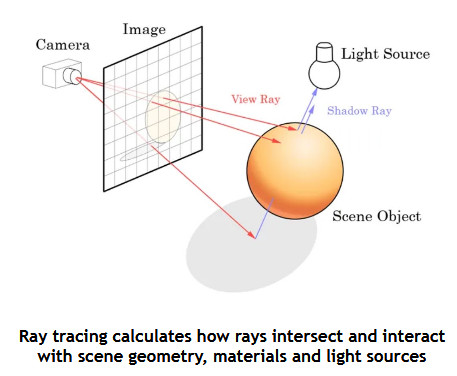
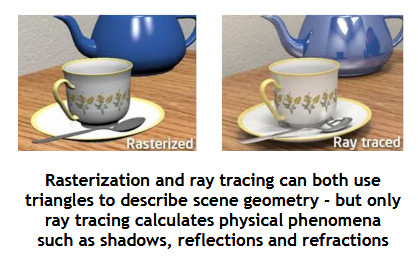
“There has been strong developer demand for a truly cross-platform ray tracing acceleration API and now Vulkan Ray Tracing is here to meet that industry need,” said Daniel Koch, senior graphics system software engineer at NVIDIA and Vulkan Ray Tracing task sub group chair at Khronos. “The overall architecture of Vulkan Ray Tracing will be familiar to users of existing proprietary ray tracing APIs, which enables straightforward porting of existing ray traced content, but this framework also introduces new functionality and implementation flexibility.”
Vulkan Ray Tracing consists of a number of Vulkan, SPIR-V, and GLSL extensions, some of which are optional. The primary VK_KHR_ray_tracing extension provides support for acceleration structure building and management, ray tracing shader stages and pipelines, and ray query intrinsics for all shader stages. VK_KHR_pipeline_library provides the ability to provide a set of shaders which can be efficiently linked into ray tracing pipelines. VK_KHR_deferred_host_operations enables intensive driver operations, including ray tracing pipeline compilation or CPU-based acceleration structure construction to be offloaded to application-managed CPU thread pools.
Vulkan Ray Tracing shaders are SPIR-V binaries which use two new extensions. The SPV_KHR_ray_tracing SPIR-V extension adds support for ray tracing shader stages and instructions; SPV_KHR_ray_query adds support for ray query shader instructions. Developers can generate those binaries in GLSL using two new GLSL extensions, GLSL_EXT_ray_tracing and GLSL_EXT_ray_query, which are supported in the open source glslang compiler. Engineers at Khronos member companies, including NVIDIA, have also added support for the SPIR-V extensions to DXC, Microsoft's open source HLSL compiler, enabling Vulkan Ray Tracing SPIR-V shaders to be authored in HLSL using the syntax defined by Microsoft, with minimal modifications.
A Vulkan SDK that includes support for Vulkan Ray Tracing will become available once all the necessary ecosystem components are upstreamed.
The core functionality of the Vulkan Ray Tracing provisional extensions builds off the pre-existing Nvidia vendor extensions, but with some new features and as official extensions to the API. The addition of ray tracing support brings the cross platform API up to parity with Microsoft's DirectX Raytracing (DXR) API, with some minor differences. The main changes relative to the Nvidia RT vendor extensions consist of renaming function prefixes from "NV_" to "VK_". Porting existing Vulkan RT applications to the official extension will be "trivial."
In addition, the Vulkan RT and DXR APIs will be largely equivalent. Vulkan RT has support for ray tracing pipelines as well as ray tracing queries, with the latter being a new addition to the DXR 1.1 spec. It doesn't require any hardware changes and merely represents an optional path for adding ray tracing effects to an application. Vulkan has also added support for writing shaders in GLSL (OpenGL Shading Language) or HLSL (High Level Shading Language), which makes porting applications between DirectX 12 and Vulkan far easier.
More technical details ae available in this blog post.
AMD is planning to support Vulkan RT with its future Navi 2x GPUs. AMD intends to provide support for all of the major features in this extension, including ray shading, ray queries, and CPU acceleration structure management.
The Intel Xe architecture roadmap includes support for hardware accelerated ray tracing.

